Cornish Cross vs. Freedom Ranger Chickens
When raising meat chickens on your homestead there are a number of factors – taste, health, time, cost butchering. But there are typically only two options – Cornish Cross vs. Freedom Ranger Chickens. Here’s our experience and recommendation after raising both.
Our first year raising meat chickens on our homestead
The winter of 2021, we were planning out all the things we would grow and raise on our new 5 acre homestead. We knew we wanted to raise enough meat chickens for our family of 5 for the next year.
So, we built a Suscovich chicken tractor to raise our birds on pasture. You can find the plans for that chicken tractor here. The plans walk you through the build process step by step and give a lot of practical tips to help beginning farmers like us raise broiler birds. Our guide for adding a metal roof to a Suscovich Chicken Tractor also gives some helpful build tips.
We carved out a section of pasture where we would raise the meat chickens and we also incorporated a three sisters garden, potatoes, and fruit trees which has allowed us to come pretty darn close to feeding our family entirely off our homestead in our first year.
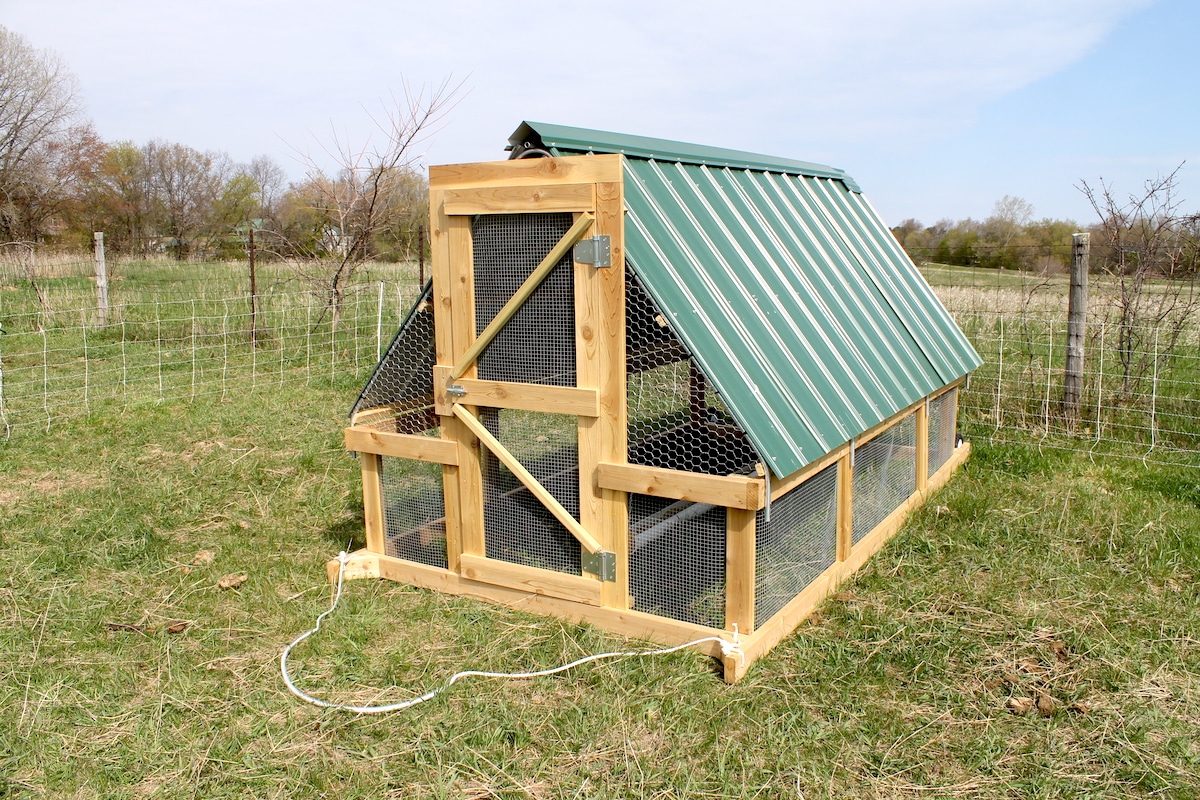
Why we raised both Cornish Cross and Freedom Ranger Meat Chickens
The next decision was which type of broiler meat chicken we would raise. The standard options from most hatcheries are the Cornish Cross and the Freedom Ranger.
We researched both, watched videos, read blog posts, and asked some farmer friends. There were pros and cons both ways and we honestly couldn’t decide.
So, we decided to raise both Cornish Cross and Freedom Ranger chickens our first year. This way we could decide which bird fit our family, our values, and our homestead the best. We ordered 25 of both types of birds and raised a round of each.

How we raised our meat chickens on our homestead.
Each batch of meat chickens was raised the same way. We started them in a brooder the first few weeks and then transferred them to our moveable chicken tractor on pasture. The tractor was moved twice daily so they had constant access to fresh pasture and bugs. Both the Cross and the Rangers were also fed a high-quality organic feed twice daily with constant access to water.
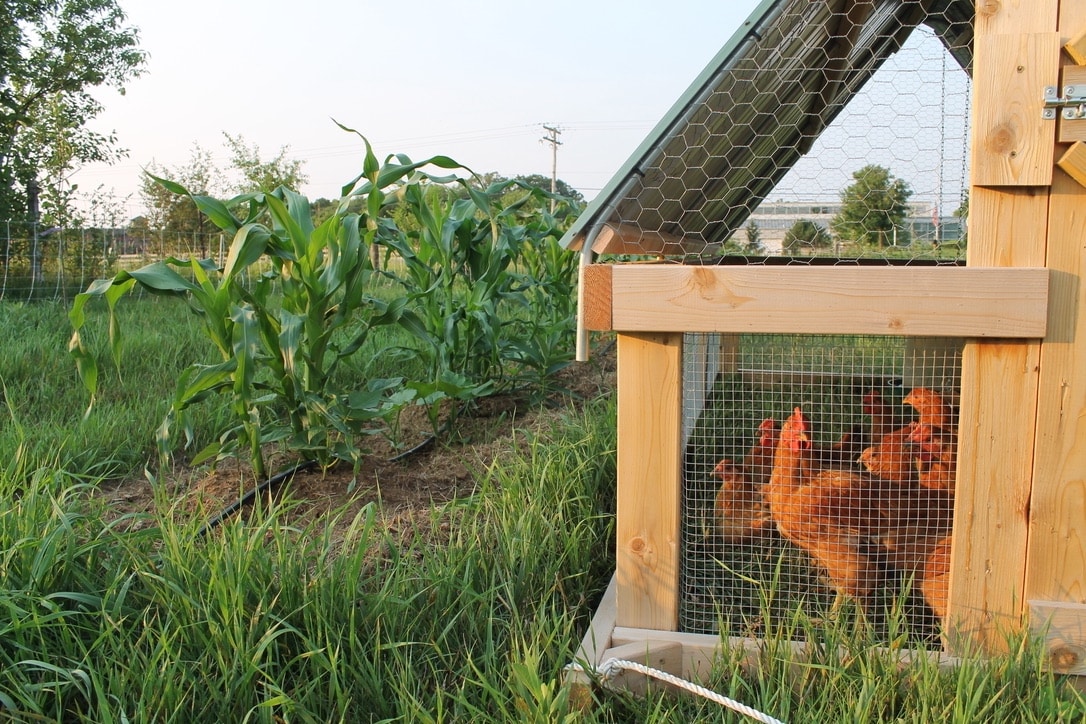
Our experience and preference between Cornish Cross vs. Freedom Ranger Chickens.
After raising both Cross and Ranger meat chickens, there was a clear winner in our minds. The categories we considered are: the health of the chicken, quality of life, taste, time to get to weight, cost, and butchering.
Health of the Chicken
Cornish Cross chickens were bred to do two things exceedingly well; eat and grow. However, this can often come at a cost to the overall health of the bird. Leg abnormalities, heart conditions, getting overweight to the point where they just don’t move effectively. We saw all of these factors pop up in our batch of 25 birds.
We also lost more Cornish Cross along the way. A few died early on as chicks. At least one died because its legs didn’t develop correctly and it just couldn’t get the regular access to food and water it needed. I unfortunately ran over a couple with the chicken tractor because they just don’t like to move, and we lost a couple that way. And one even died of a heart attack on the short transport across the street to be butchered.
We did not have any of these issues with the Freedom Rangers. They looked and acted like healthy, hearty chickens all throughout the process.
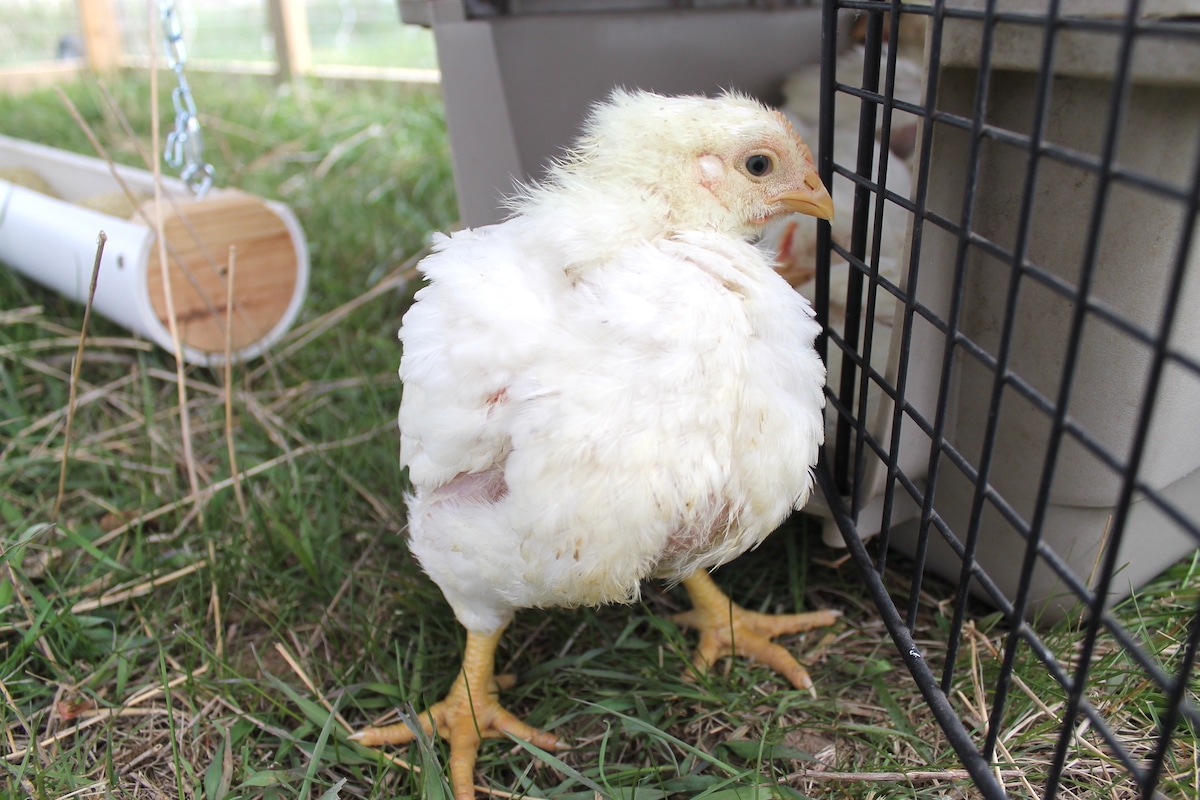
The hatchery sometimes gives you more chickens than what you actually order. For the Cross we started with 27 and ended up with 18 in our freezer. With the Rangers we started with 26 and ended up with 23.
Freedom Ranger chickens had the clear advantage on health.
Quality of Life
As a homestead, we wanted to consider both the quality of life of the chicken and the overall experience for our family as chicken growers.
To be quite frank, Cornish Cross chickens are sad birds to have around. At least that was our experience. Many of the typical qualities of a chicken were bred out of them so they move less and eat more to gain weight as quickly as possible. They are also bred to have fewer feathers, adding to their sad state.
Freedom Rangers look and act like any other chicken you’ve seen before. They peck, scratch, forage, and have all the instincts and mannerisms you’d expect to find in a chicken.
We found SO much more enjoyment as a family raising Freedom Rangers chickens. And they seemed to enjoy their quality of life more also. In fact, looking back, we had so few pictures of the Cornish Cross because there just weren’t many moments in raising them that we wanted to capture on camera.
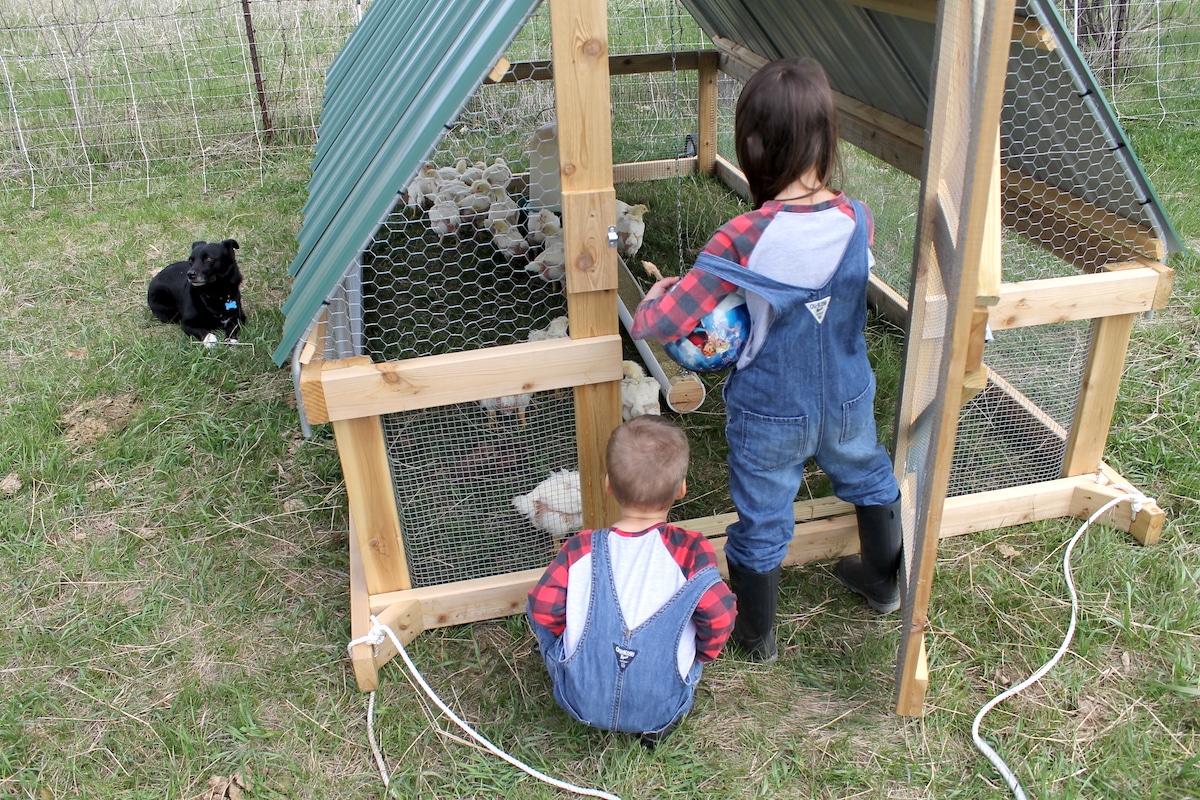
Taste
This was the area we were most concerned with. When we asked the local feed store where we ordered the chicks about Freedom Rangers, we were met with, “If you like tough chicken, then go with the Ranger.” That was a bit discouraging, but we stayed open-minded and optimistic.
In the end, both Cross and Ranger chickens were tasty and juicy. But we hands-down prefer the taste and texture of Freedom Rangers! They had more red, dark meat that was packed with flavor. And the texture was just right with any dish and cooking method we tried.
Cornish Cross give you the giant white meat breasts you see nicely packaged in grocery stores that, in our opinion, have a spongy texture. Again, the Cross tasted great. But something about the texture and disproportionately large chicken parts was a bit off-putting.
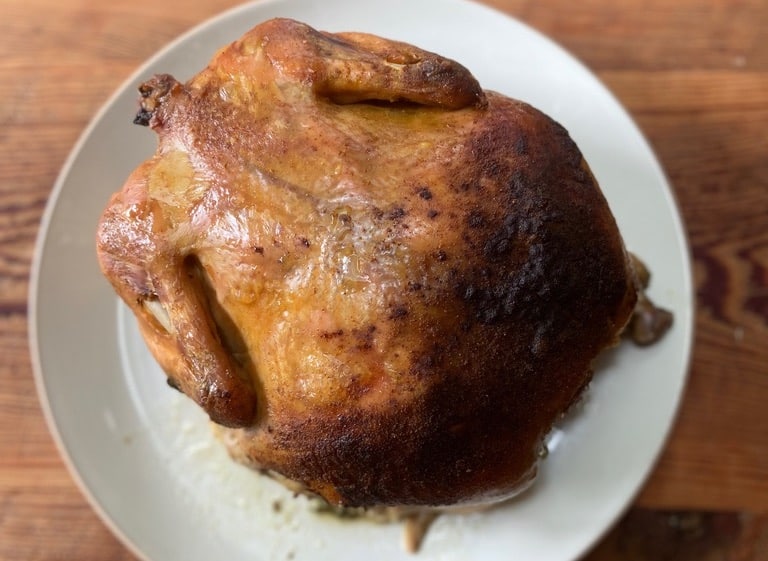
Time to Get to Weight
Our target butcher weight for our chickens was 5-7 lbs., which meant raising them to a live weight in the 6-9 lb. range.
For the Cornish Cross, our birds got to weight in roughly 8-9 weeks. For the Freedom Rangers, it took 12-13 weeks.
A difference of 4 weeks is obviously significant. Especially if you are growing on a commercial scale or are trying to squeeze in 3 rounds of meat birds into a season.
But for our purposes of raising broilers primarily for our family and only doing two batches in a season, the additional 4 weeks was somewhat of a non-factor. We didn’t mind the extra time involved in feeding, moving, and refilling water.
Cornish Cross can definitely have an advantage here if time is a big consideration.
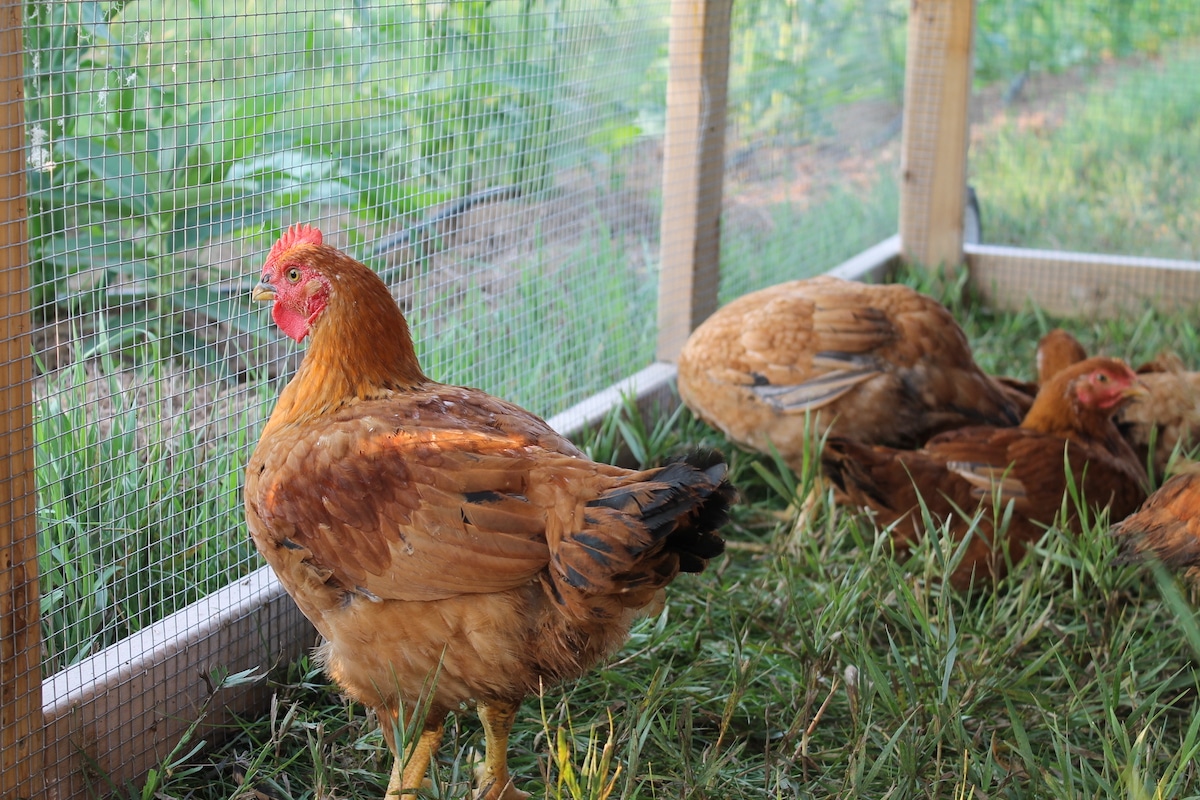
Cost
I wish I could show you our carefully kept records and spreadsheet breaking down exactly how much each batch of chickens costs to raise. Normally that’s our style, but amidst of summer of working two jobs, raising 3 kids, and getting lots of new systems up and running on the farm, we didn’t track things that carefully.
What we can say is that even though it took the Freedom Rangers 4 more weeks to get to weight, we did not buy significantly more feed raising one versus the other. The Cornish Cross will definitely go through a bag of feed faster than the Rangers.
Rangers did more foraging of bugs, grass, and other plants to help lower their feed intake. Cornish Cross hardly ate anything besides feed. A couple of times I even observed a cricket stuck in their feed trough practically screaming out, “eat me, I’m stuck!” and the Cross were just too lazy to even try.
Costs to raise each type of meat chicken seemed about the same. But when you consider the fact that we ended up with 5 more Freedom Rangers in our freezer, we definitely came out ahead cost wise with the Rangers.

Butchering
We heard that because Freedom Rangers had more feathers, they were harder to butcher. Fortunately for us, we were able to use our neighbor’s plucker. In the end, we didn’t notice any significant difference with removing the feathers from each type of bird. We maybe had to hand-pluck a couple more feathers on the Freedom Rangers, which really didn’t matter on our scale.
The most noticeable difference in butchering was some of the concerning health issues we saw with the Cornish Cross. Most notable was a questionable fluid some had inside them. The Rangers were consistently healthy and robust birds throughout life and butchering.
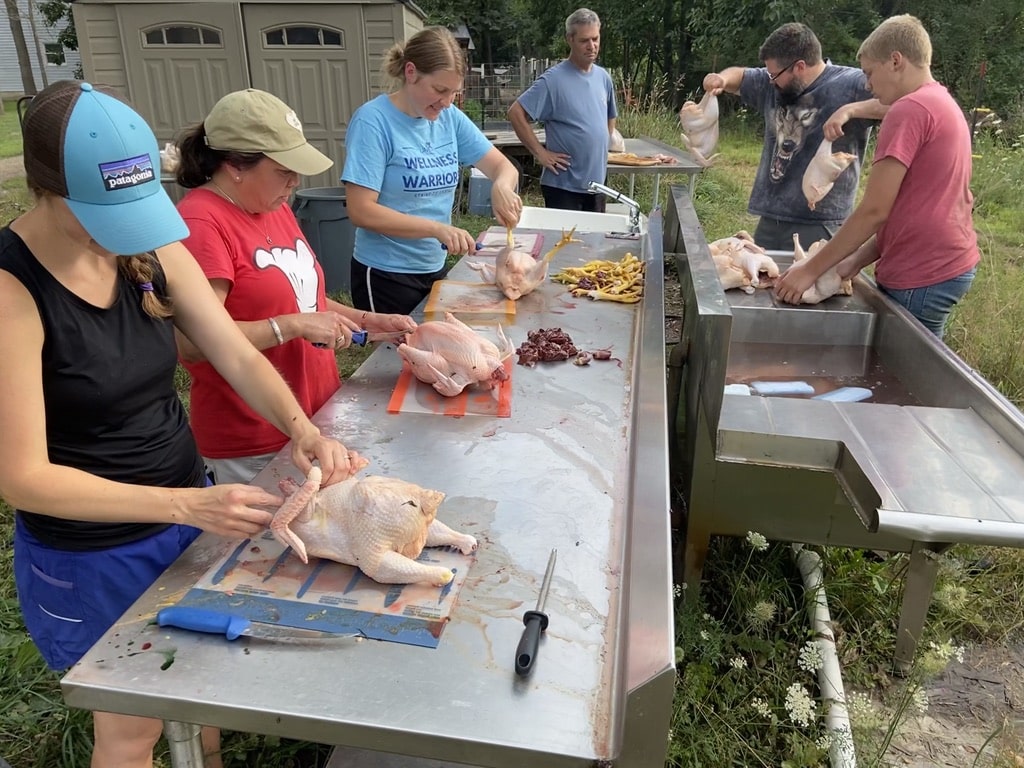
Our recommendation
After trying both breeds, we prefer raising Freedom Ranger chickens over Cornish Cross for meat birds on our homestead. We honestly didn’t know which we would choose heading into last season, but it was an obvious choice for us to order more Freedom Ranger chicks for this season and we’ll be sticking with them moving forward.
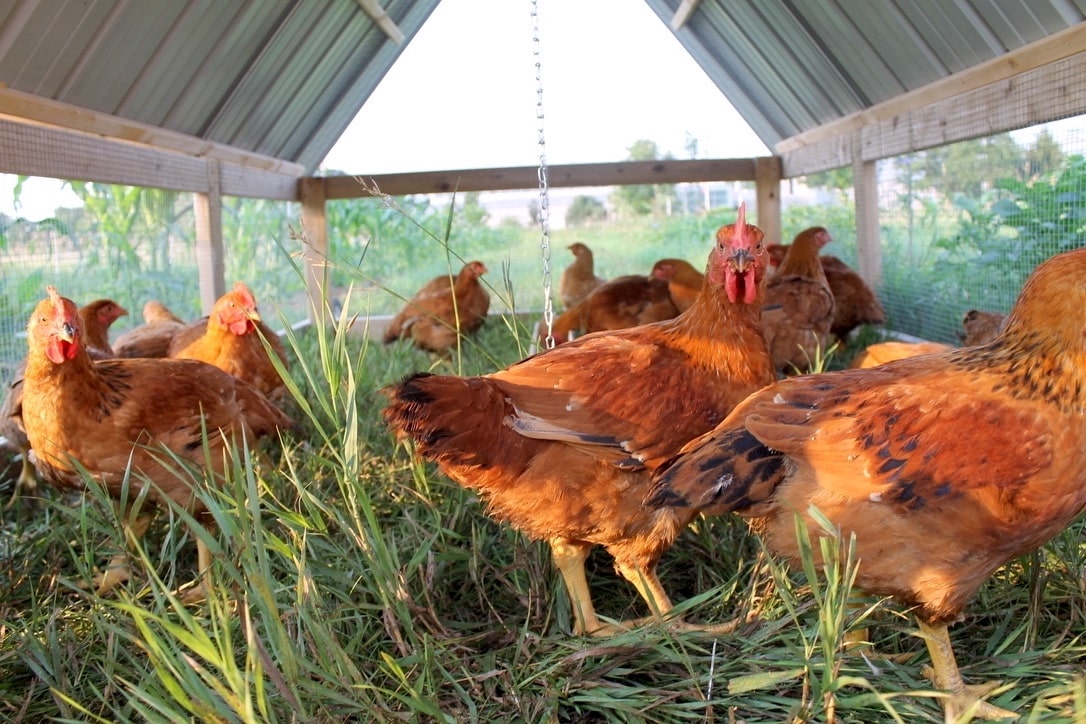
You will hear a lot of reasons out there why NOT to try Freedom Rangers. But hands down, we recommend you give them a try!
But what questions do you still have? Or, what has your experience been raising meat chickens on a small scale? We’d love to hear the experiences and preferences you walked away with!
To learn more about how to have a self-sufficient, small acreage homestead check out our posts:
- Feeding our Family on 5 Acres
- Family Milk Cow Basics
- Beginners Guide to Self Sufficient Homesteading
- Cost of Raising Chickens for Meat on a Small Scale
Some of the above links are affiliate links. This means we earn a small commission on qualifying purchases at no cost to you. We are so appreciative of your support!
Pin it for later!
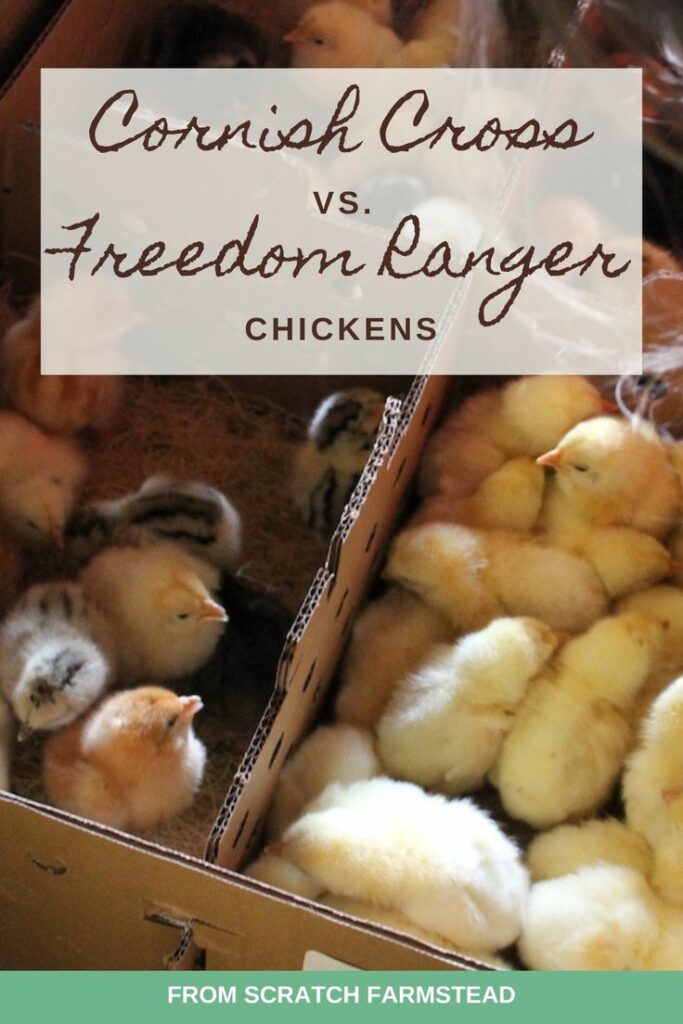
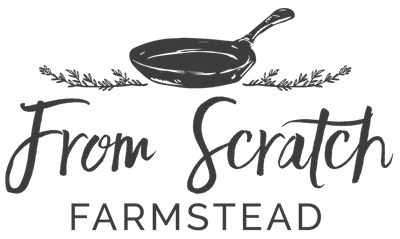
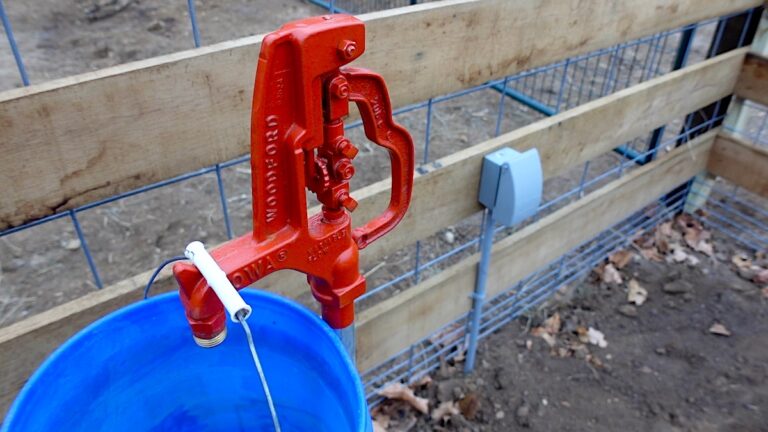
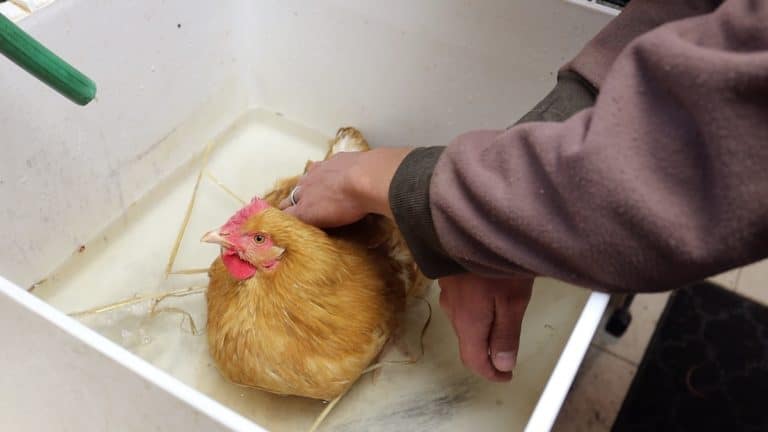

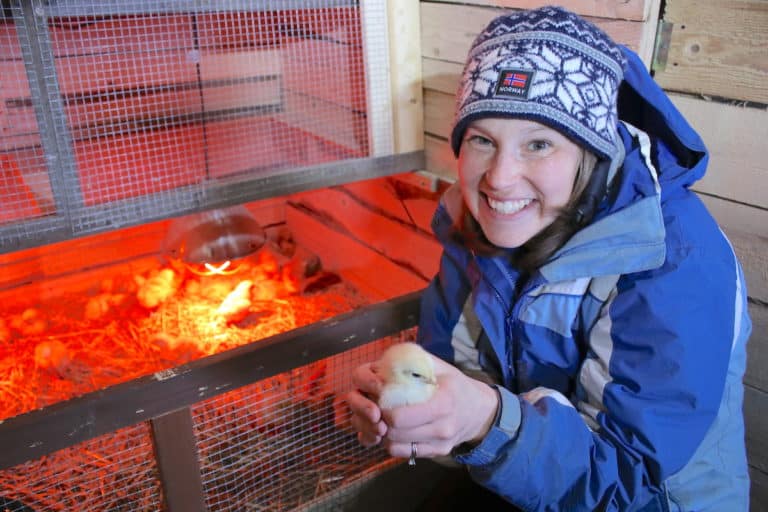
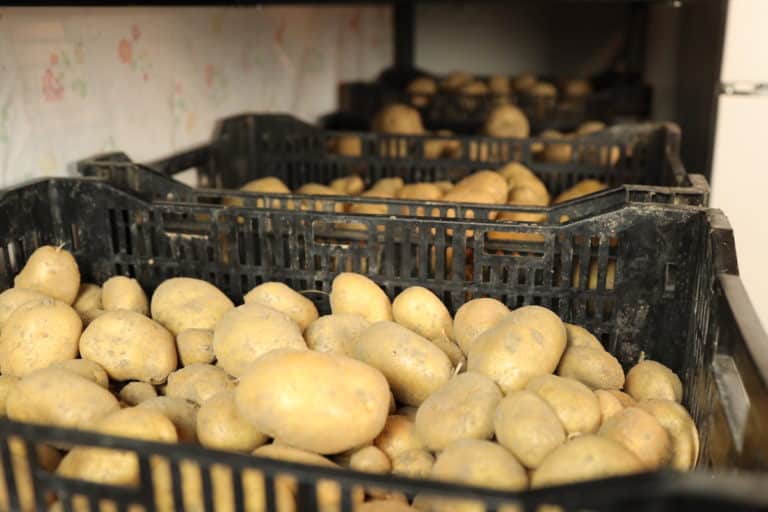

We agree wholeheartedly! We too have raised both the first year the farm was in business. Out of the 25 CC we started with, 15 made it to the freezer. We would roll fresh peppers beside them and they would watch it roll past and do nothing. If they did want to get up and move, they were flapping their wings as if they were trying to get off the ground flying only to walk 5 feet and then slam back to the ground. The FR’s are a true chicken. The second the door to the coop was opened, they ran outside and starting to scratch and forage and do things regular chickens do. As we had heard they were “just like regular chickens”, we kept one from the processor and raised her for 3 years (16% protein all the way). She lay 1-2 eggs a week (HUGE eggs) but that isn’t what they are for so egg proficiency wasn’t to be expected.
We have stuck with FR’s the past 10 years and that is the ONLY broiler we sell.
We get ours directly from Freedom Ranger Hatchery in Pennsylvania.
Thanks so much for sharing! We had another really awesome experience with the rangers again this year – just such a pleasant bird to have around. Happy farming to you!
We concur with everything you experienced in raising both breeds, higher mortality in C C, better taste and texture in F R, as well as more enjoyable to raise. We went from 25 to 17 raising C C, and are 50 out of 50 in 2 seasons of F R. We started doing this because of biting in to brown or black areas of chicken from Walmart. What’s really upsetting is I heard some commercial operations,say 65,000 birds, have 28 days to raise a bird to market…and if it’s there on the 29th day, rejected. I know our birds were still chicks in 28 days????
That’s so great to hear you’ve had such a good experience with freedom rangers! Our experience this year also went very well with them again. And yikes on the commercially raised chicken! Nothing beats growing your own food or knowing your local farmer. Take care!
I just wanted to add some info to support cornish cross broilers. I have been raising them with none of the problems that you are describing. This all results from improper/ over feeding. With proper food management mine act like “normal chickens” they even try rushing out the door everytime I feed them. I consistently have under 5% morality rate and almost 2 to 1 food conversion in 8 weeks( 12 lbs food for 5.5 lbs average processed weight. For me this is the only breed that is logical.
Thanks so much for sharing your experience and insights with raising Cornish cross. We’ve definitely heard of several success stories like yours since writing this post. We’re not writing them off completely and can definitely see where they’re more logical overall if you have a good/successful experience raising them. Thanks again and all the best to you!